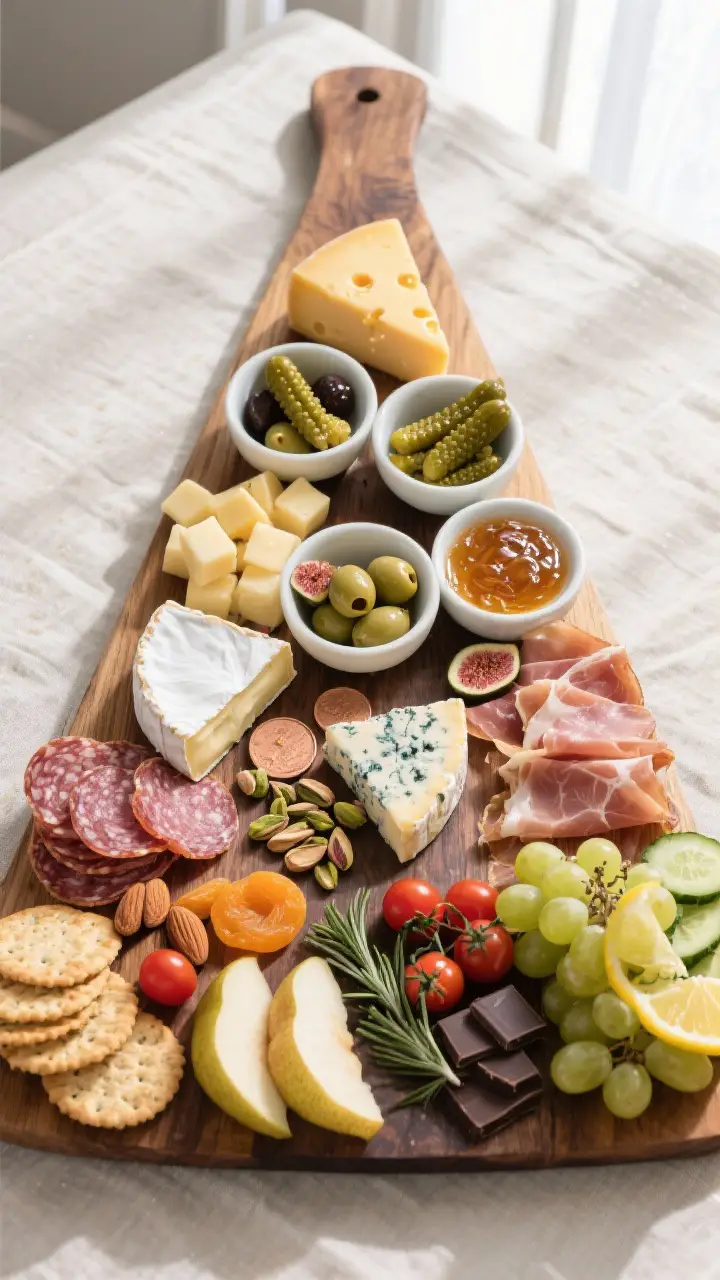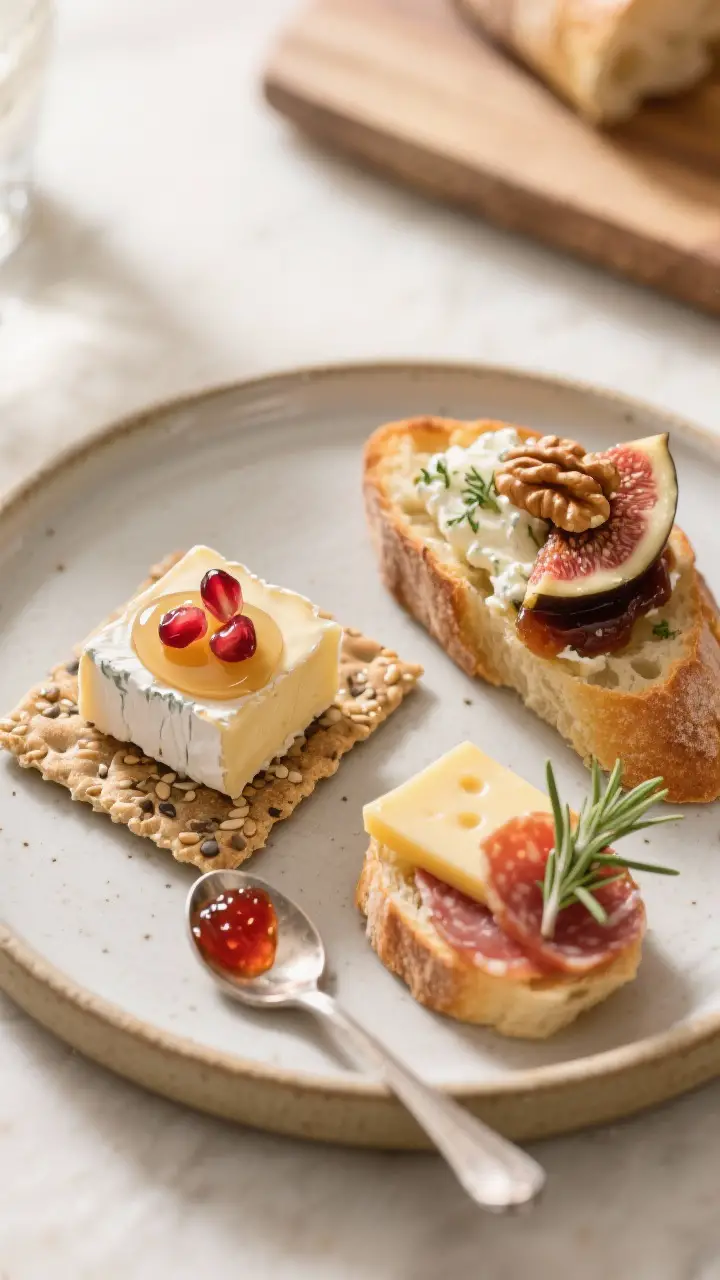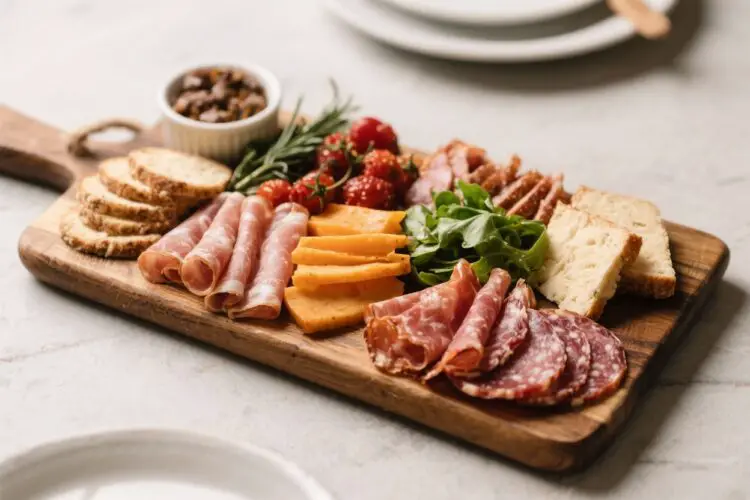Charcuterie boards look impressive, but they’re surprisingly easy to put together once you know the basics. This guide shows you how to build a classic board that looks gorgeous and tastes balanced, without overthinking it. You’ll learn what to buy, how to arrange everything, and how to store leftovers the right way.
Whether you’re hosting a big group or a casual night in, this is a dependable blueprint you can reuse and tweak. Grab a board, a few small bowls, and let’s make something that feels special with minimal fuss.
What Makes This Special

Balance of flavors and textures: You get savory meats, creamy cheeses, crisp crackers, and sweet bites all on one board.
Flexible for any budget: Mix premium items with everyday staples and it still looks and tastes great.
Customizable for guests: It’s easy to include gluten-free crackers, nut-free options, or vegetarian swaps.
Low-cook, high-impact: No cooking required—just thoughtful arranging and a little variety.
Shopping List
- Meats (choose 3–4): Prosciutto, Genoa salami, soppressata, capicola, chorizo, mortadella, or turkey salami.
- Cheeses (choose 3–5 with varied textures): Aged cheddar, Manchego, gouda, brie or camembert, blue cheese, herbed goat cheese log, fresh mozzarella pearls.
- Crackers and Bread: Assorted crackers (plain and seeded), thin breadsticks, sliced baguette (lightly toasted), crostini.
- Fresh Fruit: Grapes, apple or pear slices, berries, figs (fresh or dried), pomegranate seeds (seasonal).
- Dried Fruit: Apricots, dates, cherries, or raisins.
- Nuts: Marcona almonds, roasted pistachios, walnuts, or candied pecans.
- Pickles and Briny Bites: Cornichons, olives (Castelvetrano, Kalamata), pickled onions, pepperoncini.
- Spreads and Condiments: Honey, whole-grain mustard, fig jam, chutney, olive tapenade, red pepper jelly.
- Fresh Elements: Cherry tomatoes, cucumber slices, snap peas, radishes.
- Garnishes (optional but nice): Fresh herbs (rosemary, thyme), edible flowers, citrus slices.
- Extras: Dark chocolate squares, truffle chips, or Parmesan crisps for a salty-sweet finish.
Step-by-Step Instructions

- Choose your board and tools: Use a large wooden board, slate, or a baking sheet lined with parchment. Set out small bowls for wet items and include knives and spoons for each cheese and spread.
- Start with bowls: Place small bowls for olives, pickles, honey, and jam in a triangle pattern.
This anchors the layout and makes the board feel full from the start.
- Add the cheeses: Space cheeses around the board, separating soft from soft and hard from hard to avoid crowding. Pre-cut some pieces of hard cheeses into chunks or slices to make it easy for guests to start.
- Fold and fan the meats: Create texture by folding salami into halves or quarters and draping prosciutto into loose ribbons. Build small clusters in open spaces near cheeses.
- Arrange carbs: Add crackers, breadsticks, and crostini in small piles throughout. Keep gluten-free options grouped and labeled if needed.
- Fill with fruit and veggies: Tuck grapes, apple slices, cherry tomatoes, and cucumber into gaps. Brush apple or pear slices with lemon to prevent browning.
- Add nuts and dried fruit: Sprinkle almonds, pistachios, and dried apricots where you need color and crunch.
Use these to fill small empty spots.
- Finish with condiments: Spoon honey, mustard, or jams into their bowls and place tiny serving spoons. A drizzle of honey over blue cheese is a nice touch.
- Garnish: Tuck in rosemary sprigs or thyme around edges for fragrance and color. Add a few chocolate squares for a sweet finish.
- Final check: Make sure every item has a utensil and there are no big empty spaces. Serve at cool room temperature for best flavor, especially the cheeses.
Storage Instructions
- Cheese: Wrap leftovers in parchment or wax paper, then loosely in plastic or place in a container.
Store in the fridge for 3–5 days. Soft cheeses should be used sooner.
- Meats: Refrigerate tightly wrapped or in airtight containers for up to 5 days. Keep away from wet items to avoid sogginess.
- Crackers and Bread: Store separately in airtight bags or containers.
Refresh slightly stale crostini in a low oven for a few minutes.
- Fruits and Veggies: Refrigerate in sealed containers. Eat cut fruits within 1–2 days for best texture.
- Make-ahead tip: You can prep bowls, cut hard cheeses, and wash fruit a day ahead. Assemble the board up to 1 hour before serving and keep chilled if the room is warm.

Benefits of This Recipe
- Entertainer’s dream: Feeds a variety of tastes with minimal effort and looks like you planned for days.
- Scales up or down: Make a date-night board or a party platter using the same approach.
- Seasonal flexibility: Swap fruits and add-ons based on what’s fresh and affordable.
- Great for grazing: Perfect when dinner is casual and conversation matters more than cooking.
- Encourages mindful pairing: Guests can experiment with flavors and textures in a fun, low-pressure way.
Common Mistakes to Avoid
- Too many strong flavors: Don’t overload with blues, truffles, and spicy meats all at once.
Mix bold items with mild, creamy choices.
- Skipping utensils: Every soft cheese and spread needs its own knife or spoon to keep flavors clean.
- Forgetting temperature: Cheese tastes best slightly warm. Pull it from the fridge 30–45 minutes before serving.
- Neglecting texture: Include soft, hard, crunchy, and juicy elements for balance. Crackers alone won’t cut it.
- Overcrowding wet items: Keep olives, pickles, and jams in bowls so they don’t sog out crackers and meats.
- No plan for allergens: Separate nut and gluten-free zones, and label when hosting a crowd.
Recipe Variations
- Budget-Friendly Board: Choose two cheeses (cheddar and brie), two meats (salami and prosciutto), one cracker, one fruit, one nut, and one spread.
Use fresh herbs to make it look lush.
- Mediterranean Style: Add hummus, marinated feta, sun-dried tomatoes, artichokes, and pita chips. Use olives and stuffed grape leaves for briny notes.
- Vegetarian Board: Skip meats and add marinated mushrooms, roasted peppers, extra nuts, and a variety of cheeses. Consider a white-bean dip for protein.
- Sweet and Savory: Include chocolate, candied nuts, dried cherries, and salted butter with flaky salt for baguette slices.
Great for dessert hour.
- Brunch Board: Add smoked salmon, herbed cream cheese, hard-boiled eggs, mini bagels, cucumbers, and capers alongside mild cheeses.
- Heat Lovers: Spicy soppressata, pepper jack, Calabrian chili paste, pickled jalapeños, and honey to balance the heat.
FAQ
How much should I buy per person?
Plan about 2–3 ounces of cheese and 2–3 ounces of meat per person for an appetizer. If the board is the main event, increase to 4 ounces each and add more carbs and fresh elements.
What’s the best cheese mix for beginners?
Pick one soft (brie or goat), one hard (aged cheddar or Manchego), and one bold (blue or smoked gouda). This trio covers creamy, firm, and punchy flavors without overwhelming the palate.
Can I make a charcuterie board ahead of time?
Yes.
Assemble meats, cheeses, and bowls up to 1 hour early. Add crackers and cut fruit right before serving to keep them crisp and fresh.
What drinks pair well?
Light reds like Pinot Noir, crisp whites like Sauvignon Blanc, and dry bubbles are all versatile. For non-alcoholic options, try sparkling water with citrus, iced tea, or a tart shrub.
How do I keep costs down?
Buy cheese by the chunk, use store-brand crackers, and choose one premium item to spotlight.
Seasonal fruit and homemade crostini help stretch the board without sacrificing quality.
Do I need a fancy board?
No. A cutting board, large platter, or rimmed baking sheet works perfectly. Line it with parchment for easy clean-up and a polished look.
How do I make it look full?
Build in layers and clusters, not single lines.
Use small bowls, fold meats, pre-cut some cheese, and tuck in fruit and nuts to fill gaps and add height.
What if someone doesn’t eat pork?
Include turkey salami, roast beef slices, smoked chicken, or a larger selection of cheeses and vegetarian add-ons. Keep alternatives grouped and easy to spot.
Final Thoughts
A classic charcuterie board is about balance, color, and ease. With a handful of good ingredients and a simple layout, you can create something that feels generous and welcoming.
Keep flavors varied, textures interesting, and presentation relaxed. Once you master this template, you can adapt it for any season, budget, or crowd.
Printable Recipe Card
Want just the essential recipe details without scrolling through the article? Get our printable recipe card with just the ingredients and instructions.

